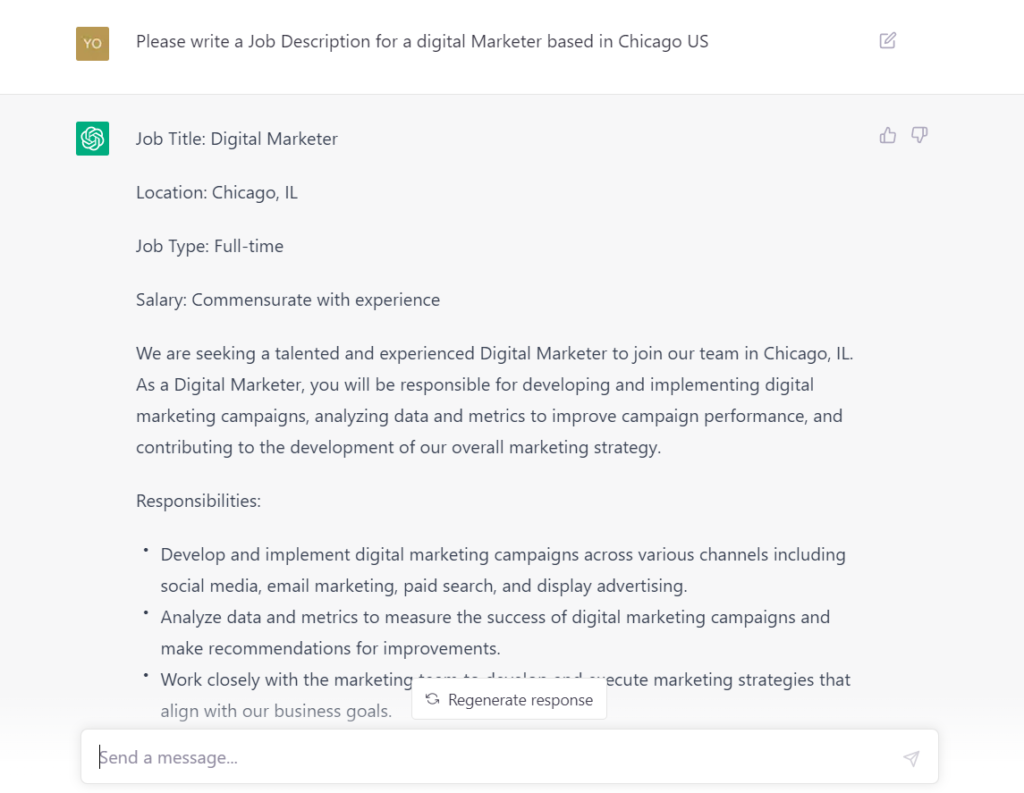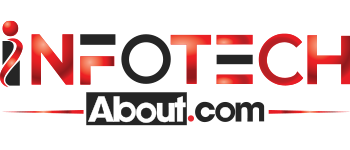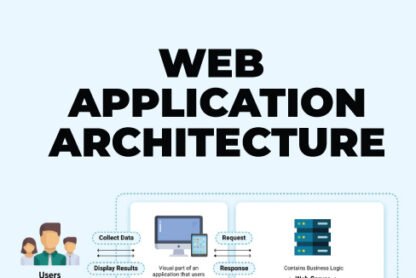What is ChatGPT?
ChatGPT, developed by OpenAI, is a powerful conversational language model that can provide text-based responses for answering questions or performing various tasks. While some may compare ChatGPT to a standard chatbot, it’s important to note that ChatGPT is far more advanced. Utilizing cutting-edge natural language processing techniques, ChatGPT can understand and interpret human language nuances with remarkable accuracy. Whether you require assistance with research, translation, or just everyday conversation, ChatGPT is an invaluable tool to have at your disposal.
Unlike standard chatbots, which are typically limited to providing predetermined responses to a narrow range of questions, ChatGPT is highly generalizable. By leveraging its advanced natural language processing capabilities, ChatGPT is able to interpret questions and tasks with a deep understanding of language, allowing it to provide highly accurate and appropriate responses. This versatility makes ChatGPT ideal for a wide range of applications, including research, customer service, and even personal assistance.
What is “Generated AI”?
ChatGPT is a prime example of a generative AI model, which is a subset of artificial intelligence and machine learning. Generative AI models create new content based on patterns derived from previously encountered information. In the case of ChatGPT, this newly generated content is in the form of text, but other models exist for image, audio, and even video generation. By utilizing this innovative approach, ChatGPT is able to provide accurate, relevant responses to a wide range of questions and tasks.
ChatGPT Message: From Prompt to Response:
ChatGPT operates as follows: The user inputs a question or instruction, which is more commonly referred to as a prompt.
When a user inputs a question or instruction, commonly referred to as a prompt, it is passed on as input to a large language model (LLM). These models use sophisticated algorithms to analyze patterns and structures in language, allowing them to interpret the prompt and generate new, relevant language in response. This advanced approach is a key feature of ChatGPT, enabling it to provide highly accurate and contextually appropriate responses for a wide range of tasks and applications.
Once the large language model has interpreted the prompt and generated new text, the resulting response is returned to the user. With that said, let’s take a closer look at how ChatGPT operates by exploring some real-life examples!
Creating Marketing Content:
While summarizing text or concepts is impressive, ChatGPT is also capable of performing more innovative tasks, such as generating marketing content. For example, let’s see what ChatGPT can come up with for a tweet that encourages people to develop their data science skills.
Write a tweet encouraging people to acquire Data Science Skills.
The tweet generated by ChatGPT is impressive, as it features a catchy slogan (“Unlock the power of data….”), considers Twitter’s character limitations, and incorporates relevant hashtags and emojis to engage the audience. In addition to creating compelling social media content, ChatGPT is also being used to streamline a range of other marketing tasks. These include generating email templates, crafting blog post titles and descriptions, and copyediting lengthy texts. By automating these time-consuming tasks, ChatGPT enables businesses to increase efficiency and productivity, while also delivering high-quality content that resonates with their target audience.
Generating and debugging code:
ChatGPT is revolutionizing the way software engineers, data practitioners, and other professionals write code. By leveraging its advanced language processing capabilities, ChatGPT can generate template code, diagnose errors, and even provide suggestions for improvement. This powerful tool streamlines the coding process and enables practitioners to write higher-quality code in less time. Whether you’re a seasoned developer or just getting started, ChatGPT can help you become more efficient and productive in your work.
Why utilize ChatGPT?
Incorporating ChatGPT into our workflows and business processes offers a range of compelling benefits. By automating many time-consuming tasks, ChatGPT allows for greater efficiency and productivity. After the AI has generated responses, human experts can provide the finishing touches to ensure accuracy and completeness. This collaborative workflow not only saves time, but also reduces costs. For example, using ChatGPT to generate marketing content allows marketers to focus on more complex and nuanced tasks, such as identifying target audiences and refining messaging. Additionally, incorporating ChatGPT into products can enable greater personalization of content, delivering added value to customers.
ChatGPT Interaction Steps:
Step 1: Receives a prompt from a user.
Step 2: The LLM (Large Language Model) interprets the Prompt.
Step 3: The LLM uses its understanding of language to generate a response.
Step 4: The response is returned to the user.
Limitation of ChatGPT:
While ChatGPT is a versatile and valuable tool that can perform a wide range of tasks, there are some limitations that users should be aware of to make the most of its capabilities.
ChatGPT under the hood:
ChatGPT’s magic happens inside the large language model, where the prompt is interpreted, and relevant text is generated based on the model’s understanding of language. To better understand the limitations of ChatGPT, it’s important to delve deeper into how the LLM works.
What is Demystifying the LLM?
Demystifying the LLM” refers to the process of making the large language model (LLM) more understandable and accessible to people who are not experts in the field of artificial intelligence or natural language processing. This involves breaking down the technical jargon and concepts into simpler terms and providing examples and analogies that can help people understand how the LLM works and what it is capable of. Demystifying the LLM can help to increase awareness and understanding of the potential applications and limitations of the technology.
Demystifying the LLM
Let’s imagine ChatGPT as a master builder who has been shown a large and complex wall made of building blocks. When given a new, incomplete wall, ChatGPT uses its expertise to fill in the missing pieces by copying patterns from the large wall. The model’s expertise comes from being trained on a huge amount of text data, which is like a building block wall. By analyzing the frequency and order of words, which are like the different colored building blocks, ChatGPT builds its understanding of the structure of language. This training data is a large part of ChatGPT’s success, as the model used complex algorithms to detect language patterns and was fine-tuned through iterative processes that included rating the quality of responses. So, when we give ChatGPT a prompt, it uses its understanding of the training data to generate the words that are most likely to follow the prompt, completing the building block wall in the process.
Limitation of ChatGPT
1). Knowledge Cutoff
- Trained on data from up to September 2021
- Not Connected to external sources
- Isn’t aware of events beyond this date
2). Training data bias
- ChatGPT was on a huge text dataset, Including Books, Articles, and Websites this data could contain biases and this model may learn the biases from the training data and in the end, chatGPT responses could be biased.
3). Context Tracking
- Struggles to keep track of the context if the focus shifts.
- This can lead to inaccurate or irrelevant results.
Tips: keep the conversation to a single topic and create new conversations for different topics.
3). Hallucination
- Hallucination is a frequent problem that can occur when communicating with ChatGPT. It happens when the model confidently provides incorrect information, usually when attempting to go beyond its knowledge cutoff or capabilities. For instance, if asked to summarize a LinkedIn profile through a URL, ChatGPT might not be able to open it, but it might still provide a summary that is completely inaccurate, and it often occurs when trying to go beyond the model’s knowledge or abilities.
3). Legal and Ethical Considerations
- Example: Creating an article in reference to the author or book.
- Who owns the new article? Is it the user that wrote the prompt?
- Easy to fall into a legal gray area.
- Ownership, Privacy, and Palagirsm issue (Google can detect).
Tips: If you are creating an article that references a particular author or book, it is important to properly cite your sources and give credit to the original author. This helps to avoid issues of plagiarism and also gives recognition to the original author for their work.
In terms of ownership of the new article, the author who writes the article generally owns the copyright to the original expression of the ideas in the article. However, this does not give the author the right to use any copyrighted material from the original author or book without permission or proper attribution.
How to Write Effective Prompts?
Garbage in, Garbage out – Mean when giving necessary prompt or incorrect generate wrong or irrelevant answers.
How does ChatGPT Interpret a prompt?
Please write a job description for a digital marketer based in Chicago US.
1). Identify the topic
Please write a Job Description for a digital Marketer based in Chicago US.
2). Understand Prompt
Please write a Job Description for a digital Marketer based in Chicago US.
3). Generate Response
See the result.

What is Prompt Engineering?
Prompt engineering involves creating prompts that optimize the quality and relevance of the response generated by a language model. This process requires the careful crafting of clear and concise prompts that provide sufficient context to guide the model toward producing accurate and meaningful outputs. By taking into account the specific domain and task, as well as the limitations and capabilities of the model, prompt engineering can significantly improve the performance of language models. The goal of prompt engineering is to ensure that language models generate high-quality responses that effectively address user needs.
WRITING TIPS FOR PROMPT ENGINEERING
1). Be clear and specific.
- Include any necessary information
- For example in a summarizing task, specify the desired length.
2). Keep it concise.
- Remove any information that doesn’t provide useful text.
3). Define the Product or topic in every question related.
- Add Product detail in each question related.
- Add Topic detail in each question-related.
Example: Write a headline for my post product: Desert Safari Dubai
4). User correct grammar and spelling
- ChatGPT uses grammar when interpreting the tasks so it is better to use grammar check and add proper punctuation.
5). Provide examples if necessary.
- Can be a much quicker way of providing context.
Example: Generating example Leads for Chicago US.
Want to form Full Name, Age, Occupation
Message: Please write a list of examples name, ages, and occupations.
for example, Josef smith, 38, Accountant

This topic is still continue and we will later part such as Augmenting Worklfows, Matching roles with common use cases and Identifiying use cases for ChatGPT in our upcoming article on ChatGPT Use Cases. if you have any query feel free comment and email at yousuf@infotechabout.com









